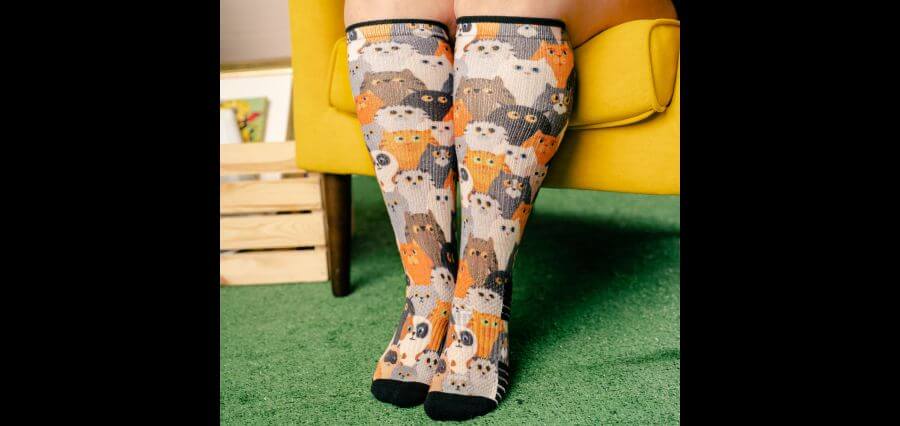Diabetic compression socks are becoming increasingly famous among people self-managing their diabetes because their involvement in the therapeutic process makes it possible to ease symptoms and improve circulation. Unlike regular socks, these have a variety of benefits that are specifically picked to fit the unique needs of diabetes patients.
Let us look at seven essential things about diabetic compression socks.
Purpose and Functionality
Diabetic compression socks are tailored to ensure graduated compression. That means they are tighter around the ankle and gradually looser toward the calf. This design provides good blood flow from the lower extremities to the heart, reducing the development of the circulation disorders common in diabetes, such as peripheral neuropathy and venous insufficiency. Through the exertion of gentle pressure from the legs, these socks prevent swelling, discomfort, and even deep vein thrombosis.
Handling Edema and Swelling
One of the most common problems among diabetic patients is edema, which is usually manifested in the feet and ankles. Diabetic compression socks may help manage this symptom by encouraging fluid flow from the diseased areas back into the bloodstream. The graduated compression of such socks reduces swelling, provides better comfort, and prevents complications associated with prolonged edema.
Prevention of peptic ulcers and wound healing.
When you’ve diabetes, you are prone to foot ulcers and wounds because of the diminishing flow of blood and nerve degeneration. Compression socks are meant to mainly avoid these complications by enhancing blood circulation and decreasing irritations on vulnerable zones of the feet. By ensuring the flow is optimal and reducing friction, diabetic compression socks can serve as a protection tool from the formation of ulcers and speed up the healing process of wounds.
Choosing the Right Compression Level
Diabetic compression socks are available at different compression levels and are usually indicated in millimeters of mercury (mmHg). It is crucial to pick the required compression degrees according to your personal case and the recommendations from your healthcare professional. Mild compression (8 to 15 mmHg) is appropriate for everyday usage or mild symptoms, while moderate to firm compression (15 mmHg or higher) is recommended for more severe cases and conditions.
Correct Dimensioning and Dressing
You should find diabetic compression socks of the right size. The correct size allows tightness to reduce complications from decreased blood flow and skin irritation. Pay attention to the measurement. When considering your leg proportion, don’t forget to consider both the calf’s circumference and the length.
Sunday Wear and Convenience
Consistency plays a crucial role in that socks improve stability gains. Consistently wear these socks all day, especially during prolonged standing or sitting, to maintain good circulation and minimize pain. Also, one of the most vital factors in keeping them safe for a long time is the correct care of diabetic compression socks. Washing them in hand with mild soap and air-drying will preserve the garments’ elasticity and compression capability.
Consultation with Healthcare Professionals
You must consult with your healthcare provider before you start wearing diabetic compression socks, especially when you have a history of any particular underlying medical condition or circulatory issues. They can provide individualized advice according to your needs, medical background, and any existing foot or leg problems. The healthcare team can also help a lot in the case of proper usage, eventual monitoring of side effects and adjustment of desired compression rates.
Diabetic Compression socks help swelling and with different problems and complications caused by diabetes. An important aspect is knowing how to take them properly. Consult health professionals and keep your diligence, besides caring about the details, to make the most of them.


